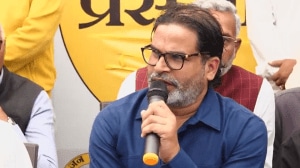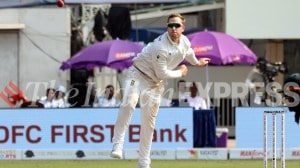No mea culpa,FIL report is just a whitewash over lugers death
The International Luge Federations 20-page report into the horrific accident that killed Georgian Olympian Nodar Kumaritashvili is exactly what was expected: a self-serving whitewash....
The International Luge Federations 20-page report into the horrific accident that killed Georgian Olympian Nodar Kumaritashvili is exactly what was expected: a self-serving whitewash.
His crash couldnt be foreseen,the FIL claims. Kumaritashvili committed driving errors,it charges. Well work to ensure that it doesnt happen again,it promises. What the federation doesnt say: Were terribly sorry that a whole bunch of people not just Kumaritashvili may have messed up.
It is truly insulting to Kumaritashvilis family,to other Olympians,to fans who were shaken by his death that the FIL simply skirts over perhaps the biggest question behind the February 12 crash: whose responsibility was it that the sliding track at the Vancouver Olympics proved to be so insanely fast? In hindsight,possibly fatally so.
Rehashing information that was long since known,even before Kumaritashvili was killed,the report reiterates that the track turned out to be faster than anticipated,with a top speed of 153.98 kilometers per hour compared to the 136 kph that its designers had originally calculated. But the report doesnt say why,nor whether the extra speed was a factor,perhaps a decisive factor,in the 21-year-olds death.
So who got this wrong and why? Will they be allowed within a million miles of a luge track in the future? Was the high speed the designers’ mistake? The builders? Someone else? And are they paying compensation to Kumaritashvilis family? The report doesn’t say.
The FIL says experts who certified the track and computer simulations did not foresee that a luger could be catapulted off coming out of turn 16. But if those are same computers that calculated the tracks anticipated top speed,can they and their programmers be trusted?
Maybe the FIL hoped that no one would notice its failure to explain why the track was 18 kph speedier than its designers originally calculated. That glaring omission means that its report cannot be regarded as a credible effort to get to the root of why Kumaritashvili is dead. This was about showing the International Olympic Committee what the FIL did right,not what anyone other than Kumaritashvili himself,of course may have done wrong.
The report makes clear that the FIL knew that the Whistler Sliding Centers unexpected quickness could be problematic. It was aware of the high speed, page 19 says. Based on this,it implemented changes it believed would mitigate the challenges posed by the higher than anticipated speed. Mitigate. Not solve,prevent or eradicate. Without explaining how,the FIL says it determined that this speed was within the ability of the luge athletes. It secured extra training runs at Whistler to help them cope. There were no indications there would be the possibility of an athlete actually leaving the track, the report says.
So only after Kumaritashvili smashed his head against a steel pillar at the exit of turn 16 did someone think to erect makeshift wooden barriers there and wrap the posts in padding.
Kumaritashvili wont be brought back by the FILs stated insistence that the next Olympic track in Sochi,Russia,be no faster than 135 kph. If speed wasnt a factor in Kumaritashvilis death,then why make lugers slow down in 2014?
The reports page of detail about the last seconds of Kumaritashvilis life how his trajectory into turn 16 was not ideal,how he reached out with his right hand,how his sled catapulted him into the air also misses the point. Anyone who saw the crash can describe what happened. The real question is why and should anyone beside Kumaritashvili shoulder some blame.
Luge still isnt providing all of the necessary answers.





- 01
- 02
- 03
- 04
- 05


























